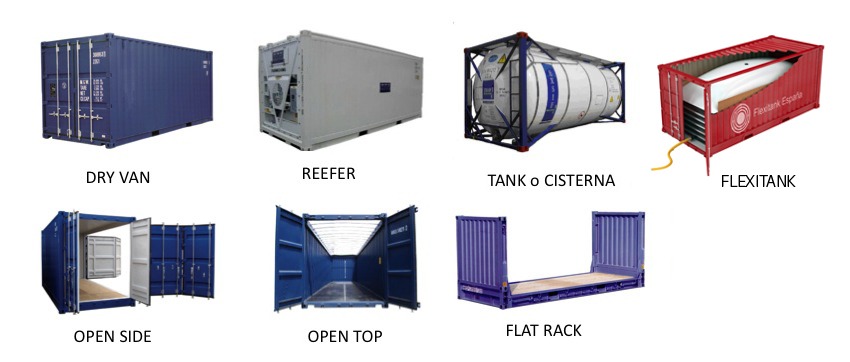Every day hundreds of sea containers leave the main ports of Spain for foreign markets, the preferred option for a large number of companies (and sometimes the only one) to reach some of the most important export points worldwide. What are the types of sea containers that exist?
Thanks to these, many companies around the world can get their goods to economically attractive markets. Both Spanish companies as exporters, as well as maritime containers arriving to our shores from all over the world help greatly to the logistics of these companies. Sometimes the fastest, safest and most economical form of transport for them.
Maritime containers are made of steel in most cases. Maximum quality and safety are sought after. In this type of operations nothing can fail. They are also made of aluminum and, to a lesser extent, wood, but all of them are coated inside with materials that protect the goods from the different weather conditions they have to face, such as excessive heat or high humidity rates, depending on the specific destination point.
These maritime containers have a series of common characteristics, regardless of the type, such as an alphanumeric identification -of between 4 and 7 numbers- and twistlocks, to be hooked to the cranes during loading and unloading processes.
As far as their measurements are concerned, they are usually 20 feet (approximately 6 meters long) or 40 feet (approximately 12 meters long), and the maximum load may vary depending on the shipping company and the type of container. The most internationally standardized 20-foot containers have a maximum gross weight of about 30.48 tons (i.e., the cargo plus the tare or weight of the container) and the 40-foot containers have a maximum gross weight of about 32.5 tons.
The most common sea containers used are:
Dry Van. These are the most common maritime containers that do not have special refrigeration or ventilation, they are hermetically sealed.
High Cube. These are 40-foot shipping containers with a special height that can reach up to 9.6 feet.
Open Top. These are containers that open at the top and allow the goods to protrude.
Open Side. Maritime container for 20 or 40 feet cargoes, although specifically used for cargoes of greater dimensions in length.
Reefer. Maritime containers that have a special system of temperature conservation, both cold and heat, adjustable by thermostat so they must be connected at all times operating under three-phase current.
Flat Rack. They are containers without side walls and sometimes without front and rear walls. Ideal for oversized loads, those who opt for them must pay supplements for their use as with the Open Top.
Tank or Tank Container. Maritime containers used for the transport of bulk liquids. A kind of tank contained within a series of steel beams that delimit an orthohedron and whose dimensions are equivalent to those of a Dry Van. It can be stacked without difficulty.
Flexi-Tank. Sea containers used for the transport of bulk liquids, an alternative to the previous tank container. It is usually 20 feet, inside which is fixed a single-use flexible polyethylene tank called flexibag.

